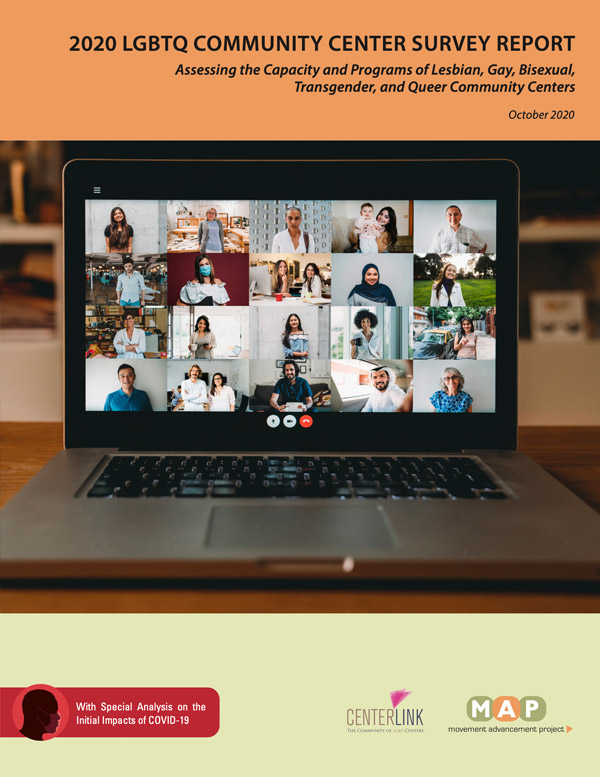The Bottom Line
The 2020 biennial
LGBTQ Community Center Survey Report provides a detailed picture of centers’ staff and boards, program priorities, constituencies and services, infrastructure, fundraising, budgets, and technical assistance needs. The 2020 report finds that local community centers serving LGBTQ people provide vital information, education, and health services to over 58,000 people each week pre-pandemic, and 45,700 a week during the pandemic.
2020 LGBTQ Community Center Survey Report Download 2020 LGBTQ Community Center Survey Report: CyberCenters Download 2020 LGBTQ Community Center Survey Report: Infographics Download 2018 LGBT Community Center Survey Report Download 2018 LGBT Community Center Survey Report: CyberCenters Download 2018 LGBT Community Centers & Advocacy: InfographicDownload 2016 LGBT Community Center Survey Report Download 2016 LGBT Community Center Survey Report: CyberCenters Download 2014 LGBT Community Center Survey Report Download 2014 LGBT Community Center Survey Report: CyberCenters Download 2012 LGBT Community Center Survey Report Download 2010 LGBT Community Center Survey Report Download 2008 LGBT Community Center Survey Report Download
Recommended citation format:
Movement Advancement Project and CenterLink. October 2020.
2020 LGBTQ Community Center Survey Report. [URL].
Abstract
The 2020 LGBTQ Community Center Survey Report, prepared jointly by MAP and CenterLink and published every two years, provides an overview of local lesbian, gay, bisexual, transgender, and queer (LGBTQ) community centers, including their capacity, their programs and services, the people they serve, and their technical assistance needs.
This year, the report surveyed 186 centers located in 43 states, the District of Columbia, and Puerto Rico, and provides a crucial snapshot of the centers that provide vital services, programs and advocacy for LGBTQ people. Among the report’s key findings:
- Among participating centers that provided financial information, their combined pre-COVID 2020 budget was nearly $315 million, with centers reporting in July 2020 an adjusted combined budget of $304 million due to the pandemic.
- Nearly half (46%) of all participating centers reported obtaining at least one government grant (local, state, or federal) of over $10,000 in 2019.
- Participating centers employ nearly 2,500 paid staff and engage with nearly 14,000 volunteers for nearly half a million (550,000) volunteer hours annually.
- More than half of LGBTQ community centers remain thinly staffed: 23% have no paid staff and rely solely on volunteers, and 33% have between one and five paid staff. As expected, small centers with budgets of less than $150,000 are much more likely to have few or no paid staff; 55% of small centers have no paid staff, while 73% of centers with budgets over $150,000 have six or more paid staff.
- Four-fifths of centers (80%) that engage in policy-related activities work to advance policy at the local level, 71% at the state level, and 37% at the national level.


